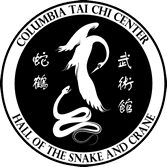Background Information
At the appropriate point during the Mastery Program students at Columbia Tai Chi Center may elect to begin working with a weapon. The first weapon they learn is the “Staff” (also referred to as a “Bo” in Japan, “Gun” in China or “Bong” in Korea). Many modern practitioners use a staff that is a few inches taller or shorter than they are. Considerations when using a staff is that while the longer staff extends your reach, the shorter staff is easier to handle. Columbia Tai Chi Center uses a traditional staff which is 6’ long and 1.25” in diameter. A staff of this size is wielded with both hands due to its weight and size.
By Dwight Huffman
Wax wood is a Ligustrum sometimes referred to as Glossy Privet, Chinese Privet or Broad-leaf Privet. It is considered an invasive species in some countries. The Ligustrum lucidumis used in Chinese medicine is the largest of the species growing to 30 meters (nearly 100 feet).
I have never seen one that tall in this area. The varieties I’ve seen growing in Columbia are only about 10 meters (33 feet) or less. It grows tall if left to itself and has glossy leaves, and in the fall it produces grape like berry clusters of purple BB size berries. More information can be found at:
http://en.wikipedia.org/wiki/Ligustrum_lucidum.
The dimensions of a standard Staff used in Tai Chi (sometimes referred to as a Bo depending on the martial discipline) are six feet long and 1.25 inches in diameter. The tree I used was about fifteen feet high and had about 12 feet of useable trunk.
You should select a trunk section that is straight and at least two inches in diameter at the smallest end. I cut the log to about seven feet and removed all branches by cutting flush to the trunk. The bark and soft outer layer are about one quarter inch thick. I removed it by slicing thru the bark lengthwise with a razor knife and then using a one inch wood chisel, bevel side down, to work under and lift the bark. It comes off in big strips.
Then it is time to get the shaft as straight as possible. Saw off flush with the trunk any protuberances caused by limbs. The trunk will now be about 1.5 inches at the narrow end and larger toward the base. This will give you some wiggle room to make a straight shaft. I tried various devices as straight edges to keep the shaft straight while marking the excess wood to be removed and settled on an eight foot piece of wood lattice that can be found at any home improvement store.
Using your guide, mark up what needs to be removed to leave the desired finished Staff. Trees rarely grow perfectly straight so you will need to “see” the finished shaft and remove what is not needed. The finished shaft is approached in stages, removing less wood on each successive stage – so be bold but careful on the first reduction. If you miss-judge, you will have to live with the imperfections since you can’t put wood back.
My Staff has two flat spots where I failed to adjust to avoid a curve in the trunk. I used a sabre saw and a Japanese pull saw for the first stage of wood removal. First, make a rough square larger than 1.25 inches, and then remove the corners of the square. I used a small hand plane and a Stanley sureform to round the Bo down to its final form. Then, I hand sanded with 80 grit and 100 grit paper.
The Staff needs to dry slowly so do not subject it to extremes of temperature or humidity. I worked on it outside and then stored it on the enclosed back porch when not working on it. A few knot holes developed cracks and I stop drilled and filled them with marine epoxy. This filler has held up well for more than a year.
Initially, the Staff weighed 1,321 grams, quite heavy. Over the next three weeks or so it dried further and I did a little more trimming to final size and got the weight down to 1,122 grams. Now after two months it is down to 1,088 grams. For reference I weighed Sifu’s Staff and it weighs 1,026 grams. I am using it unfinished until the weight stabilizes, then I plan to use a clear polymer varnish.
Completing the Staff took a couple of hours during the morning and evenings over the course of a week and a half. The total time was about 30 hours or less. Now that I have worked out what tools to use it should take substantially less time to make another.






